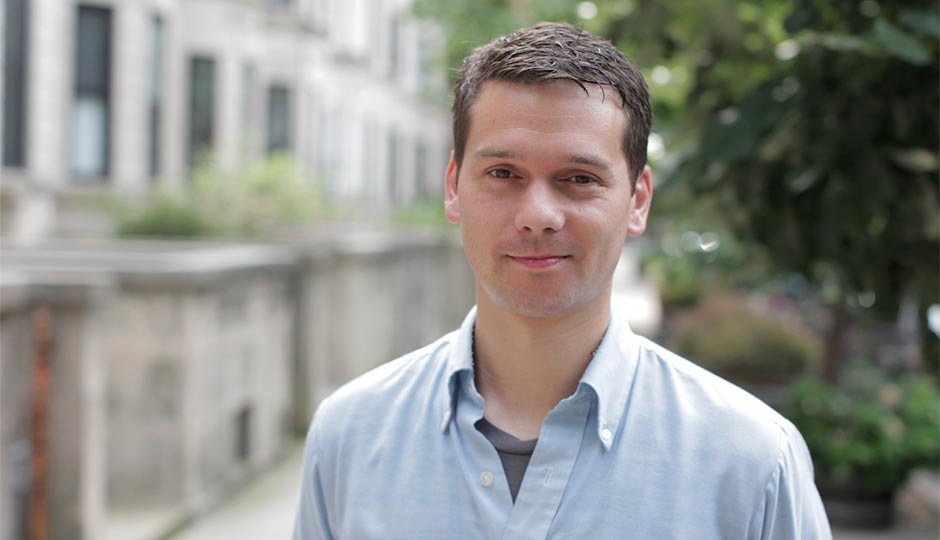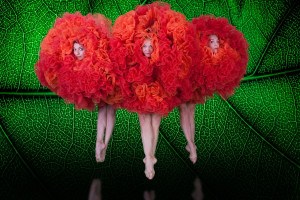Five Questions: Jeremy Saulnier on Green Room

Jeremy Saulnier, director of Green Room.
Considering the bloody, jarring material he often works with, Jeremy Saulnier is an almost absurdly normal and unassuming seeming man. His new film, Green Room, follows the violent travails of a callow, dead broke punk band who get a gig booked at a mysterious club outside of Portland that turns out to be a white supremacist stronghold, lead by the terrifyingly calm Darcy (Patrick Stewart). When a body suddenly turns up in their dressing room, things go from bad to worse in a hurry. Soon, the band is fighting for their lives just to survive the night.
Despite the distinctly B-movie set up, Saulnier, who showed a penchant for such violent meditation in his previous film, Blue Ruin, never lets the material move into slick silliness or flamboyant gore. Instead, it’s a dark, gritty, scarily realistic account of survival. The director spoke with us on the topics of violence, visual storytelling, and finding an audience.
There is a lot of violence in the film, but it’s so naturally realized, and shockingly deadpan it really makes an impact. What draws you to that sort of depiction?
I’m a huge fan of makeup effects. I don’t shy away from a makeup show when I think we need one, but it’s more about audience perception, because the violence in my films is often the highlight as far as how we discuss them, but the body counts are relatively low. We see similar situations unfold all the time with almost zero impact, and so it’s really the coupling of what we see on screen as far as the graphic violence but feeling an actual loss and a devastation that’s associated with it. That’s what I gravitate towards.
You have an interesting method of visually asking questions of the audience – what is that character planning to do with that duct tape? – and answering them visually later on. Are you attracted to wordless storytelling?
When you can tell a story visually, that’s my priority. To let the audience connect the dots and feel like they’re really leaning in and participating in the film. There’s certainly things, especially the first viewing, that people might miss, but it’s my great pleasure to not over explain and to not give people a blow by blow. I tell a story visually in a very linear way with no gimmicky setup payoff, but with real fulfilling reveals that keep the audience engaged. It’s so fun.
This film has no death hierarchy: Different characters die, ones we thought might live, ones we assumed were goners, but there’s no moral lesson – no nerdy virgin girl who survives, for obvious example. As you were writing it, did you know who was going to live?
Yeah, I knew going in who was likely going to survive, but I didn’t seal that deal. When people were killed it was a shock to me, so I didn’t have a death order at all. I just kind of let it happen. It was tough. The hard part was when we actually cast the roles and I saw how great these actors were at portraying them, and they made them so human and so relatable. I had to stick with it, and that’s an important discipline: to not ever give in to my own instincts, which would be to soften the blow.
Since box office will be a factor in what you get to make next, it’s pretty important that this does well. Between punks, music geeks, action fans, and gore enthusiasts, it would seem as if you have a pretty solid base audience, no?
Yeah, as far as the core genre audience, it’s a home run, no doubt. The most exciting part is after test screenings, people you would never pick out of a line up come up to me and say, “I really don’t like these kind of movies, but somehow this one did it for me.” That’s exciting because it’s not a slasher film mentality. These characters aren’t just meat: You’re not just waiting to see them die. I think what people respond to, even people who aren’t normally attracted to this, is the exhilaration of [experiencing] real feelings, real peril, and real terror.
After Blue Ruin, there was a groundswell of critical praise and good buzz about your work. How much do you think that plays into a studio’s interest?
As far as my clout, I think it’s just about me trying to keep the blinders on and make films that line up for me creatively, and that in and of itself is an anomaly, to be able to retain a certain amount of creative control. Perhaps I did target eight people from my youth growing up. That’s who this movie’s dedicated to, this group of friends that I made films with and went to punk rock shows with, but what I’m seeing, especially on social media, is so many people out there think I made this film just for them and their friends, and it’s starting to catch on. That’s exciting. It applies to standup comedy. You think, “This is too esoteric for anyone else to get. It’s just for me. I get this. This guy or girl is funny, but how can this actually play to a wide audience?” And all of a sudden you realize, “Because they’re all out there and they all think it’s for them,” and it’s the whole local becomes universal thing. Hopefully, it will pay off.
Green Room opens Friday, April 29th, at the UA Riverview theater.
Piers Marchant is a film critic and writer based in Philly. Find more confounding amusements and diversions at his blog, Sweet Smell of Success, or read his further 142-character rants and ravings at @kafkaesque83.


